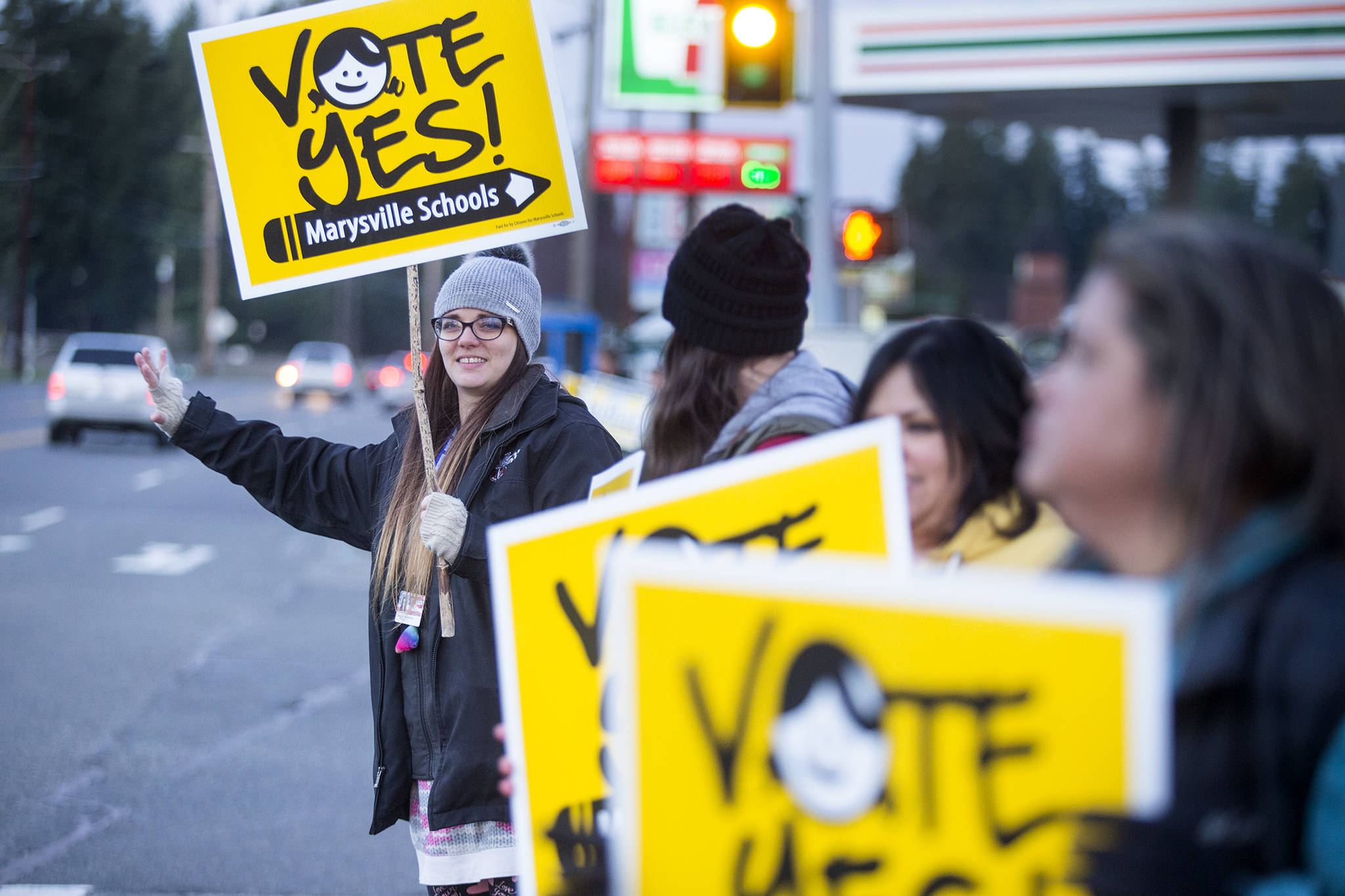By The Herald Editorial Board
Snohomish County voters were apparently in a mood to say no, more so than the rest of the state.
Statewide, voters gave their approval to about 90 percent of the school operations and capital levies that school districts put before them in Tuesday’s special election, state schools Superintendent Chris Reykdal told a gathering of state newspaper editors and publishers in Olympia on Thursday. Bonds for major construction projects, which require a 60 percent supermajority to pass, were less successful, with only five of 16 districts statewide earning approval from voters. Still, that isn’t a bad success rate considering the lingering taxpayer angst that followed the school funding crisis of recent years.
But at school districts within Snohomish County, that revolt may not have dissipated.
Nine of the county’s school districts ran levies for programs and operations or capital projects or bonds for major construction projects to build or remodel schools. Of nine levies, four are currently passing, two of which were in one school district; five are below the 50 percent level needed for passage. Levies appear to be passing in Arlington (one operations, one capital); Edmonds (one capital); and Stanwood (one operations); but failing in Darrington, Lakewood, Marysville and Monroe.
Lakewood, Marysville and Monroe pursued capital levies, which were to go toward construction and facility improvements, but unlike bonds, only needed a simple majority to pass. Still those efforts appear to be failing.
Of four bond elections in county school districts, only one has the 60 percent approval needed, but just barely, 60.4 percent for Mukilteo’s $240 million request. Bond requests are failing in Arlington, Edmonds and Snohomish.
The Herald’s Jerry Cornfield noted some likely factors for that rate of failure in the county, including rising property tax bills that resulted from higher home values and earlier tax decisions by voters; persistent confusion among voters over the state’s responsibility for public education; and broader anger over the court challenge of Initiative 976 that voters passed in November.
Still, Reykdal said, he was puzzling over the results in Snohomish County. Snohomish County’s anti-tax sentiment regarding I-976 is similar to that in Pierce County, he noted, yet that didn’t seem to affect most school tax measures in that south Puget Sound county. The difference there, he said, may have been a campaign coordinated among that county’s school districts and superintendents to get their message out on levies and bonds.
Every voter, of course, has his or her own reasons for voting yes or no.
But those justifications don’t change the need for funding, either for operations or school building construction.
Even with the state taking a greater responsibility for funding “basic education,” the changes lawmakers made still leave local school districts to return to voters for levies that are meant to fund programs outside those “basics.” At the moment, school districts still must go to their voters for special education funding, early learning programs, counselors, nurses and other mental health services, as well as support for athletics, music, club activities and more.
And while the state does provide some funding for capital school facility construction, the responsibility is largely left to property owners in local districts to support. Without bonds or capital levies, little can be done by school districts beyond adding portable classrooms, which themselves eat into operations budgets.
And much of that state money is tied to the voters’ approval of bonds. Matching funds aren’t released until districts have bond funding in place for construction; and even some operations funding, including money for reducing class sizes for K-3 classrooms, isn’t made availabile until schools have the classroom space.
Reykdal said the Office of the Superintendent of Public Instruction is looking to work with state lawmakers to provide more state funding, including freeing up some of the proceeds from harvests of timber on state Department of Natural Resource Land, he said.
With the state having met its state Supreme Court mandate to fund basic education, there remains a responsibility for the state to provide more funding for school construction. But voters will also need to meet their local obligations to their school district’s children.
A major study released last year by the DNR regarding the seismic safety of school buildings, examined 5 percent of facilities statewide, 222 of the state’s 4,444 public school buildings, including schools in the Marysville School District.
Of that sample inspected, the report found that most school buildings, particularly older buildings, would not be safe to occupy after a significant quake; about 25 percent would be beyond repair; and that more than 43 percent posed a “high” or “very high” risk for loss of life during an earthquake. In Marysville, of nine school buildings reviewed, six were judged as posing a “very high” life-safety risk; two as “high” and one as “moderate high.”
Since 1990, Marysville has been able to pass a school construction bond once in eight attempts. Now it has failed even to win support from a simple majority of voters to pass levies that would have replaced its two oldest elementary schools, Liberty (built in 1951) and Cascade (built in 1955).
Beyond earthquake safety, there remain the educational needs of students who must prepare for the 21st century while relegated to 20th-century classrooms.
Each school district will now have decisions ahead about whether, how and when to return to voters to seek approval of these levies and bonds. The need has not evaporated with voters’ rejection.
Voting no, of course, sends a message — vague as it is — to lawmakers and school district officials. But what message are we sending to children?
Talk to us
> Give us your news tips.
> Send us a letter to the editor.
> More Herald contact information.

























